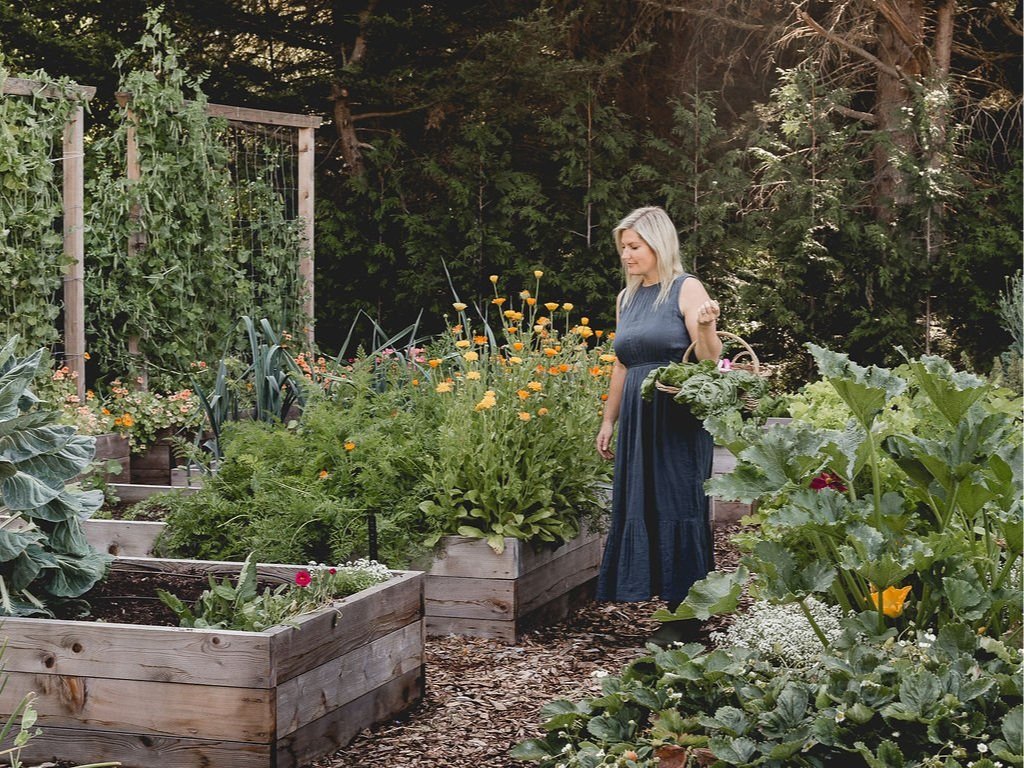Your Guide to Successfully Growing Spinach
Check out my NEW Gardening E-Book!
Steal my gardening methods including how to plan your garden, companion planting, pest control & vertical growing!
Spinach is a versatile and nutritious leafy green that’s easy to grow in your garden. Whether you’re a beginner or have a few seasons of gardening under your belt, spinach is a rewarding crop that provides quick harvests and a wealth of health benefits. This guide will walk you through everything you need to know to grow spinach successfully.
Why Grow Spinach?
Spinach is packed with nutrients, including vitamins A, C, and K, iron, magnesium, and antioxidants. Adding it to your diet can boost your immune system, support bone health, and provide a low-calorie source of energy. Beyond its nutritional value, spinach is also a beneficial plant in the garden. It grows quickly, helps suppress weeds, and thrives in cooler weather when many other crops struggle.
When to Start Spinach Seeds
Timing is critical when growing spinach, as it prefers cooler temperatures. For spring planting, start seeds indoors 4-6 weeks before the last expected frost date in your area. Alternatively, you can sow seeds directly like we do in the garden here in zone 9. We plant spinach at the end of march as soon as the soil is workable, typically 2-4 weeks before our last frost. For a fall harvest, sow seeds in late summer or early fall, about 6-8 weeks before the first expected frost.
How to Plant Spinach
Choose the Right Spot: Spinach prefers a location with full sun to partial shade and well-drained, fertile soil with a pH between 6.0 and 7.5.
Prepare the Soil: Enrich the soil with compost rich soil to provide essential nutrients and improve drainage. I often add a sprinkle of worm casting before planting as well.
Sow the Seeds: Plant spinach seeds about ½ inch deep and 1 inch apart in rows spaced 12 inches apart. Thin seedlings to 3-4 inches apart once they’ve grown a few true leaves to allow enough room to grow to its full potential.
Water Regularly: Keep the soil consistently moist but not waterlogged right after planting. Water regularly until you see germination. Then water every few days, if your spinach is turning yellow, you are watering too much or the soil is lacking the right nutrients.
Caring for Your Spinach Plants
Monitor for Pests: Common pests like aphids and leaf miners can damage spinach. Remove leaves with pests. If you see holes in your leaves, that is normal for an organic garden as perhaps a slug had a little feast. It is completely edible, wash before eating.
Watch for Bolting: Spinach tends to bolt (go to seed) in hot weather. Harvest regularly to encourage new growth and prevent bolting. Harvest all your spinach before heat wave or summer time to ensure it’s highest level of nutrients and taste.
Harvesting Spinach
Spinach is ready to harvest in as little as 30-45 days after planting. You can pick individual leaves when they are 3-4 inches long or cut the entire plant about an inch above the soil line. Harvesting in the morning ensures the leaves are crisp and fresh. I encourage continuous harvesting of leaves to encourage the plant to keep producing.
Benefits of Growing Spinach
Quick Growth: Spinach grows rapidly, making it ideal for gardeners who want quick results.
Nutritional Powerhouse: Fresh spinach offers superior taste and nutrition compared to store-bought options.
Versatility: Use spinach in salads, smoothies, sautés, soups, and more for a nutritious boost.
Growing spinach is one of our families favourite foods as our kids actually eat it in smoothies. They also love to plant spinach as the seeds are big enough for them to handle in their tiny hands. By following the steps above, you’ll enjoy a bountiful harvest of this nutrient-rich green. Whether you’re growing it for its health benefits or as a cool-season addition to your garden, spinach is sure to be a staple in your gardening journey.
* Note: Some links featured in the above post are commissionable/affiliate links.






